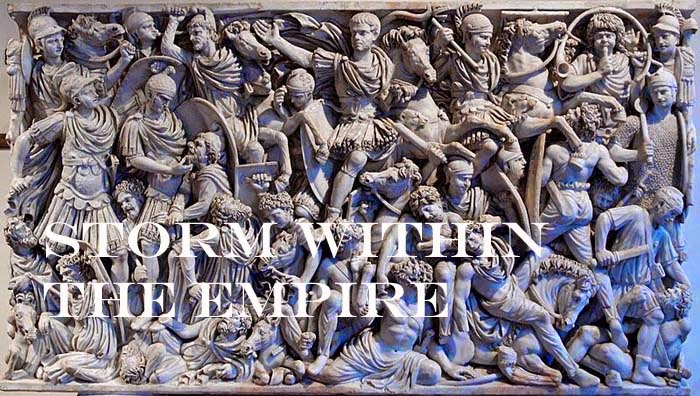Returning to the
Migration to Kingdom project I had
planned to continue the barbarian invasion as it unfolded in Hispania (409 AD).
Unfortunately, I had struck an impasse as the campaign rules, as written, would
not adapt well to the arrival of the barbarians and two decades later, the departure of the Vandals
for Africa. As fate would have it the solution came
elsewhere, the barbarian incursions of Roman Britain.
The situation in
Roman Britain was very much different. The Roman general Constantine usurps the
throne and departs Britain to deal with the barbarian invasion of the Gallic
provinces. Leaving only the garrisons behind he takes with him the field army
to arrive in Northern Gaul in the spring of 407 AD. It is not clear if Constantine had appointed
a replacement or if local officials selected their own candidate, what does
follow after his departure are an increased number of incursions by the Picts,
Scots and Saxons.
As written, the campaign
rules now needed to track the long period of invasions (decades) by a greater
number of barbarians confronting the Romano-Briton, the Picts from the north,
the Scots-Irish from the west and the Saxons from the south-east. The time
frame per turn therefore must change from its current monthly interval to possibly
years. After further consideration, the time frame between invasions should occur at random intervals, but this
begs the question by how many years?
Next, we have
the problem of which of the barbarian invade first? A simple casting of the die
could resolve this. Also to consider, the Romano-Briton as defender would have ‘arable’ as home terrain, yet we find other
geographical areas that would certainly qualify giving the defender the additional choice
of hilly, forest, or littoral; some certainly preferable if fighting at under
strength.
I enjoy the simplicity of the DBA
system as with the cast of one die you can resolve a number of issues. Keeping this in mind I searched for one step that could resolve the issue of year,
opponent, at what strength and terrain type.
Next post, testing the campaign game.
Map:
End of Roman Rule Britain
383 – 410 AD {1}
{1}
By my work -
Based on Jones & Mattingly's Atlas of Roman Britain (ISBN
978-1-84217-06700, 1990, reprinted 2007); Mattingly's Imperial Possession (
ISBN 978-0-140-14822-0, 2006); Higham's Rome, Britain, and the Anglo-Saxons
(ISBN 1-85264-022-7, 1992); Frere's Britannia (ISBN 0-7102-1215-1, 1987); and
Snyder's An Age of Tyrants (ISBN 978-0-631-22260-6) — the sources are cited in
the image legend — Locations of towns (fortified and unfortified) are given on
p. 156, with tribal civitates and coloniae specified on p. 154, of Atlas of
Roman Britain. Specification of the Romanized regions of Britain are also from
the Atlas, p. 151. The "Departure Dates" are found in the cited
sources, and are generally known. The Pictish, Saxon, and Scoti raids are found
in the cited sources, as is the date of the Irish settlements in Wales. Frere
suggests (p. 355) that it was the Irish who sacked Wroxeter c. 383. The
locations of the Irish settlements is from the locations of inscription stones
given in File:Britain.Deisi.Laigin.jpg as of 2010-10-11, which cites its
sources of information.The topographical map is from a sub-region of File:Uk
topo en.jpg, with the copyright notice {{Bild-GFDL-GMT|migration=relicense}}
and original date of 7 July 2006, copy made in 2008, with the annotations
removed by myself., CC BY-SA 3.0,
https://commons.wikimedia.org/w/index.php?curid=11817590


No comments:
Post a Comment